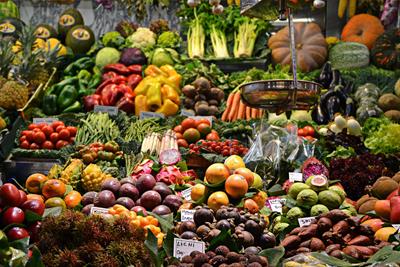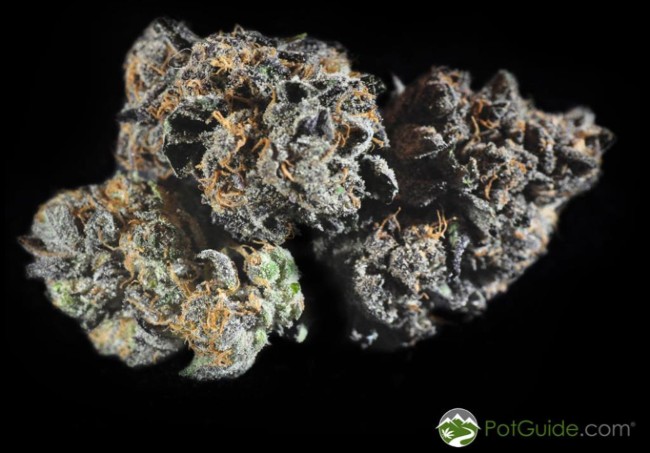
Monday December 28, 2020
By Paul Barach
 Education
Education
Given that there are over 200 known compounds in cannabis - each potentially affecting both the overall physical and psychoactive effects of the plant - it’s understandable if the average marijuana consumer has never heard of flavonoids. After all, they’re not mentioned with the same regularity as more popularly known compounds like THC, CBD, or terpenes, so how important can they be? Besides, “flavonoids'' sounds like some whimsical CGI characters invented for a bubble gum commercial that surf a curling wave of blue raspberry flavor onto your tongue. But just as with CBD and terpenes, the cannabis community is beginning to pay closer attention to flavonoids as yet another important group of compounds in the cannabis plant.
So what are flavonoids? How are they different from terpenes? What impact do they have on the effects of marijuana?
What We Know About Flavonoids
Despite the fact that these compounds were identified years ago by the Israeli chemist Raphael Menachem – one of the two founders of modern cannabis science – flavonoids remain less studied and less understood than more well-known compounds such as THC, CBD, and terpenes. Most cannabis consumers at this point are familiar with those big three. They can tell you that THC intoxicates you, CBD chills you out and helps with pain or inflammation, and terpenes give the bud taste, smell, and influence your brain through the entourage effect. Flavonoids, on the other hand, remain a mostly unexplored piece of the cannabis puzzle since you can’t easily smell them, taste them, or feel them working.

What is known about flavonoids so far is that they make up about ten percent of the two hundred known compounds in cannabis, and there are around twenty different varieties produced by the plant. There are some flavonoids that only exist in the cannabis plant. However, much like terpenes, flavonoids are present in many different types of plants, from fruits to flowers. So far, over six thousand different types of flavonoids have been identified in nature.
Flavonoids in Plant Biology
So what do flavonoids do? While you may assume from the name that they have something to do with the word “flavor” (or that they were named as an homage to legendary Public Enemy hype man Flava Flav), the root actually comes from \flavo, the latin word for “yellow.” The reason for this is that one of flavonoids’ main jobs in nature is providing pigmentation for plants. Flavonoids are what color a daisy’s petals to attract pollinators, give Honeycrisp apples their pinkish flush, and produce a carrot’s bright orange skin. They also help to protect the plants against pests, disease, and serve as a sort of sunblock against the most harmful UV rays.
When it comes to weed, flavonoids are behind much of the different colors you’ll find in the bud’s leaves.
For example, anthocyanin is a type of flavonoid found in cannabis as well as in fruits. Anthocyanin is what turns raspberries their ruby red. In bud, anthocyanin is responsible for turning strains like Grand Daddy Purple that deep shade of violet that makes it look like it ate the wrong gum at Willy Wonka’s factory.

So, in a strain like Purple Cotton are terpenes responsible for the sweet flavor and flavonoids the reason the leaves are so purple? Is the difference as simple as that? Not really. It seems that flavonoids don’t just handle the color palate of plants like weed. They also work synergistically with the terpenes to express the taste and smell of each essential oil. Another difference is that flavonoids also appear to be spread throughout all parts of the plant, whereas terpenes and cannabinoids are mostly contained within the flower’s trichomes.
The Many Effects of Flavonoids
To recap so far: when it comes to cannabis, flavonoids help protect the plant from pests, mildew, disease, and the sun. They also add color to the buds and assist the terpenes in producing their distinct aromas and flavors. But that’s not all.
It appears that flavonoids also can have numerous beneficial effects when it comes to health. By isolating and testing flavonoids found in different foods and plants, researchers have discovered many potential benefits to ingesting flavonoids. Some have been found to have antioxidant qualities, while others help in cancer prevention.

There are also anti-inflammatory effects that have been observed, as well as antimicrobial qualities (this helps in pest and disease protection in the plants.) Flavonoids have also been shown to help protect the cardiovascular and nervous systems.
All these health claims make more sense when you consider that flavonoids are present in a lot of leafy greens and other vegetables considered to be superfoods by the health food community. For example, luteolin, a flavonoid found in both cannabis and vegetables like green pepper, is known to be an antioxidant, have anti-inflammatory properties, and has shown some effectiveness in preventing heart disease.
In some studies, flavonoids that are found only in marijuana, known as cannaflavins, have produced anti-inflammatory effects thirty times stronger than those produced by aspirin. This may be one of the reasons that cannabis smoke causes far less damage to lung tissue in both the short and long term than nicotine smoke does.
So what about flavonoids’ effects when it comes to the brain? As we all know, terpenes bind to receptors in the brain alongside cannabinoids like THC and CBD and each produces a different effect based on the combination. A terpene like limonene can uplift mood and reduce stress, whereas pinene gives an energy boost and myrcene aids in relaxation. The physical or mental effects of any one terpene can change in the presence of other terpenes or cannabinoids in what is known as the “entourage effect.” They also help different cannabinoids lock into their receptors.
Final Notes on Flavonoids
Flavonoids are also important in cannabis when it comes to facilitating the entourage effect, but their role is more subtle and less psychoactive than that of terpenes. Specifically, flavonoids may increase the bioavailability of other active cannabinoids and terpenes in marijuana. While more research has to be done to fully understand their role, they may influence how these active compounds are transported through the body. They may also affect how these cannabinoids and terpenes bind with receptors, as well as how certain enzymes metabolize THC and CBD.
While too little is still known about the intricacies of flavonoids, it’s yet another reminder of how important it is to take full-spectrum products like CBD or THC instead of isolates, especially for medical patients or people looking for health benefits. Marijuana has evolved alongside humans for thousands of years as both a medicinal plant and an intoxicating one. Every one of those two hundred compounds in the plant that we know of so far, and plenty that may remain unidentified, are what has made marijuana one of the oldest cultivated plants in human history.







